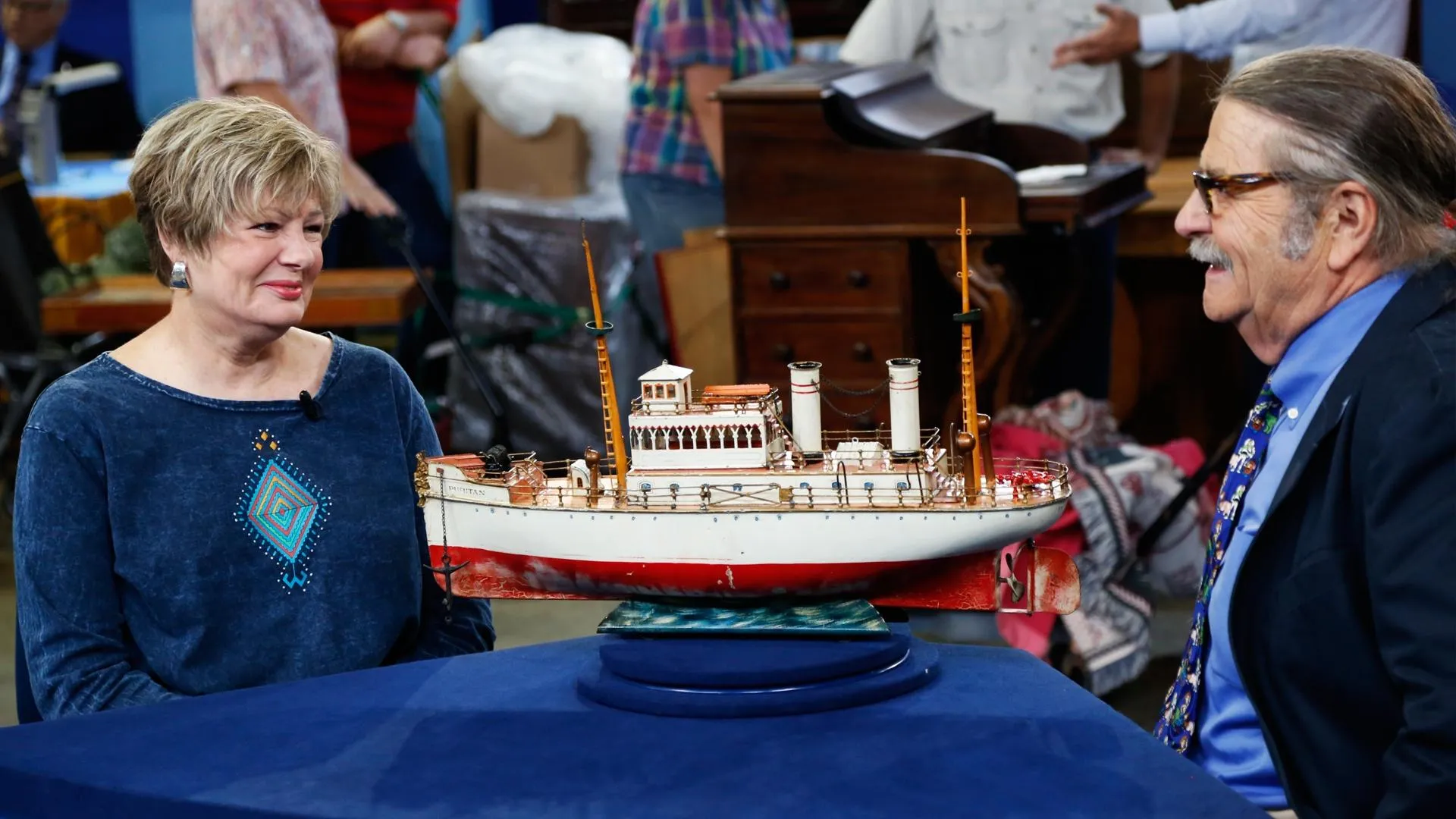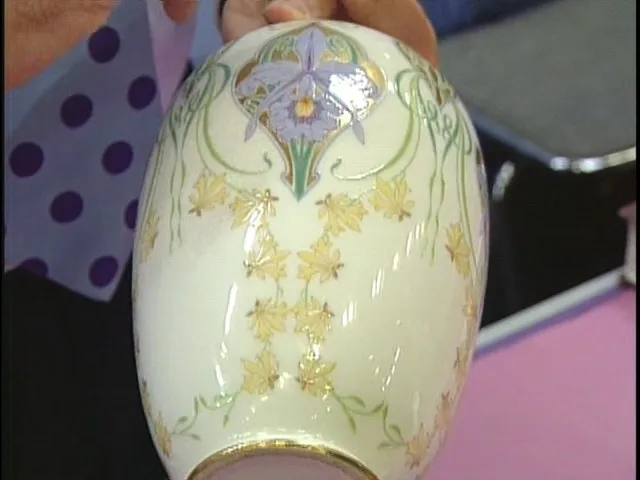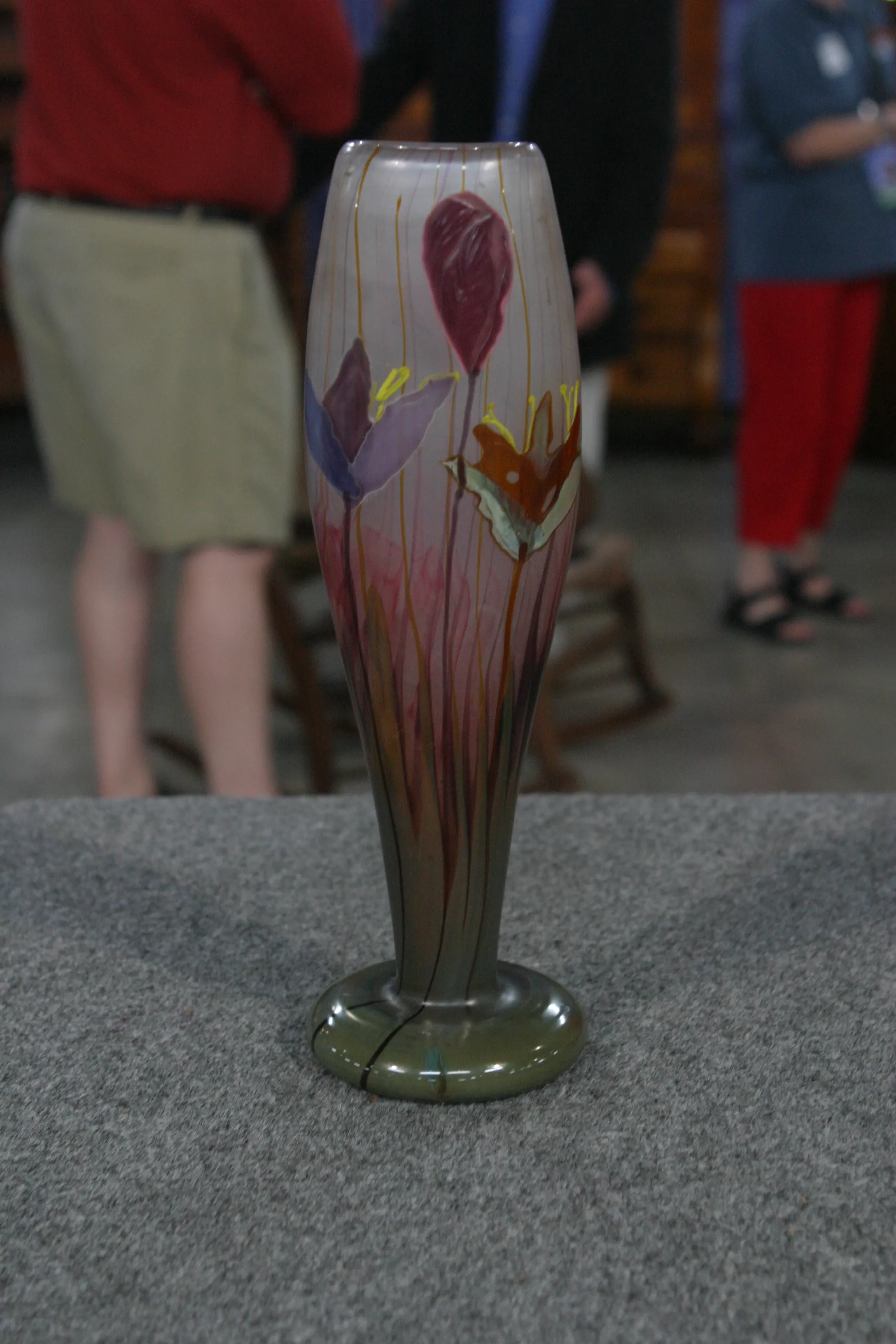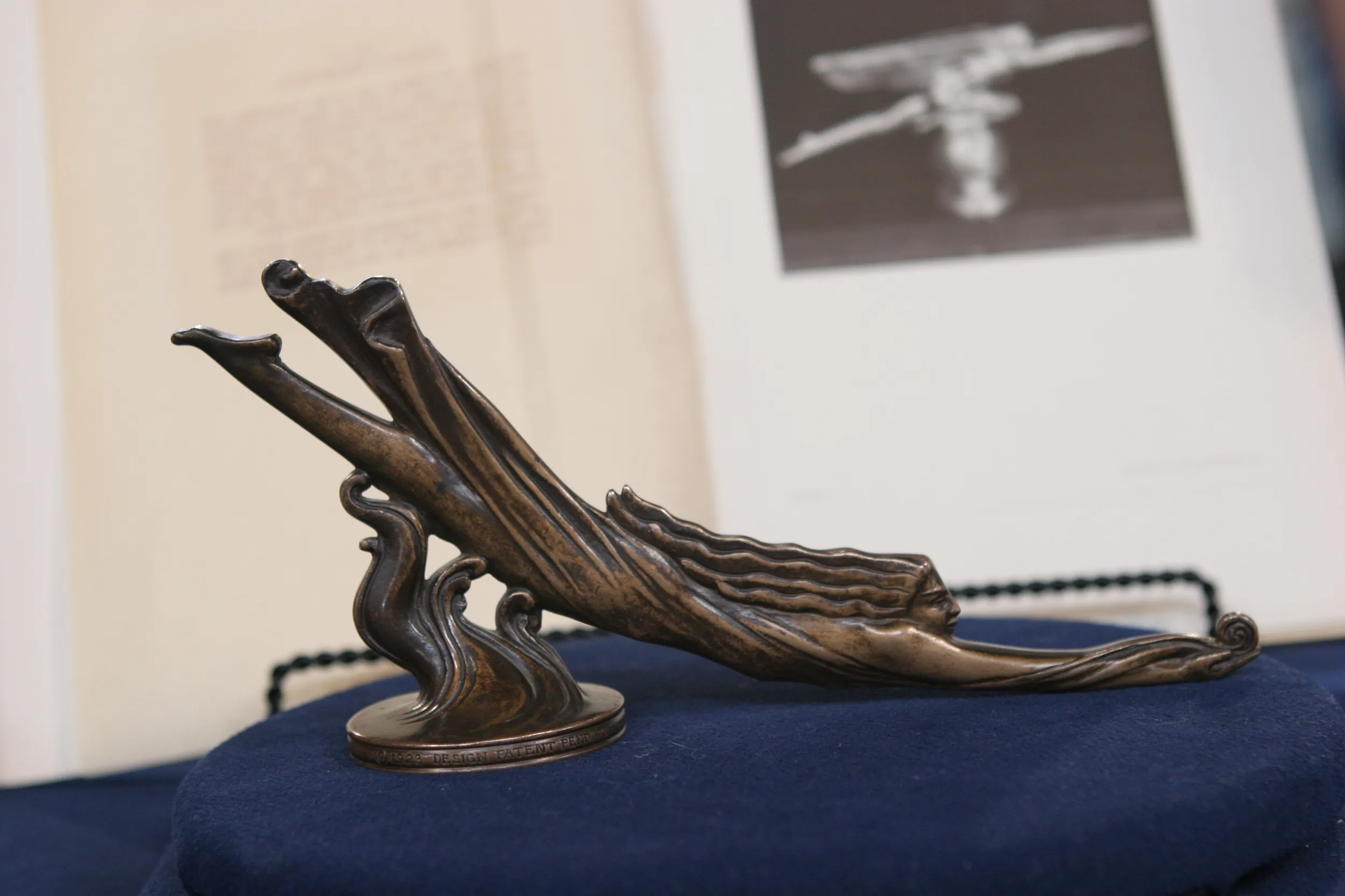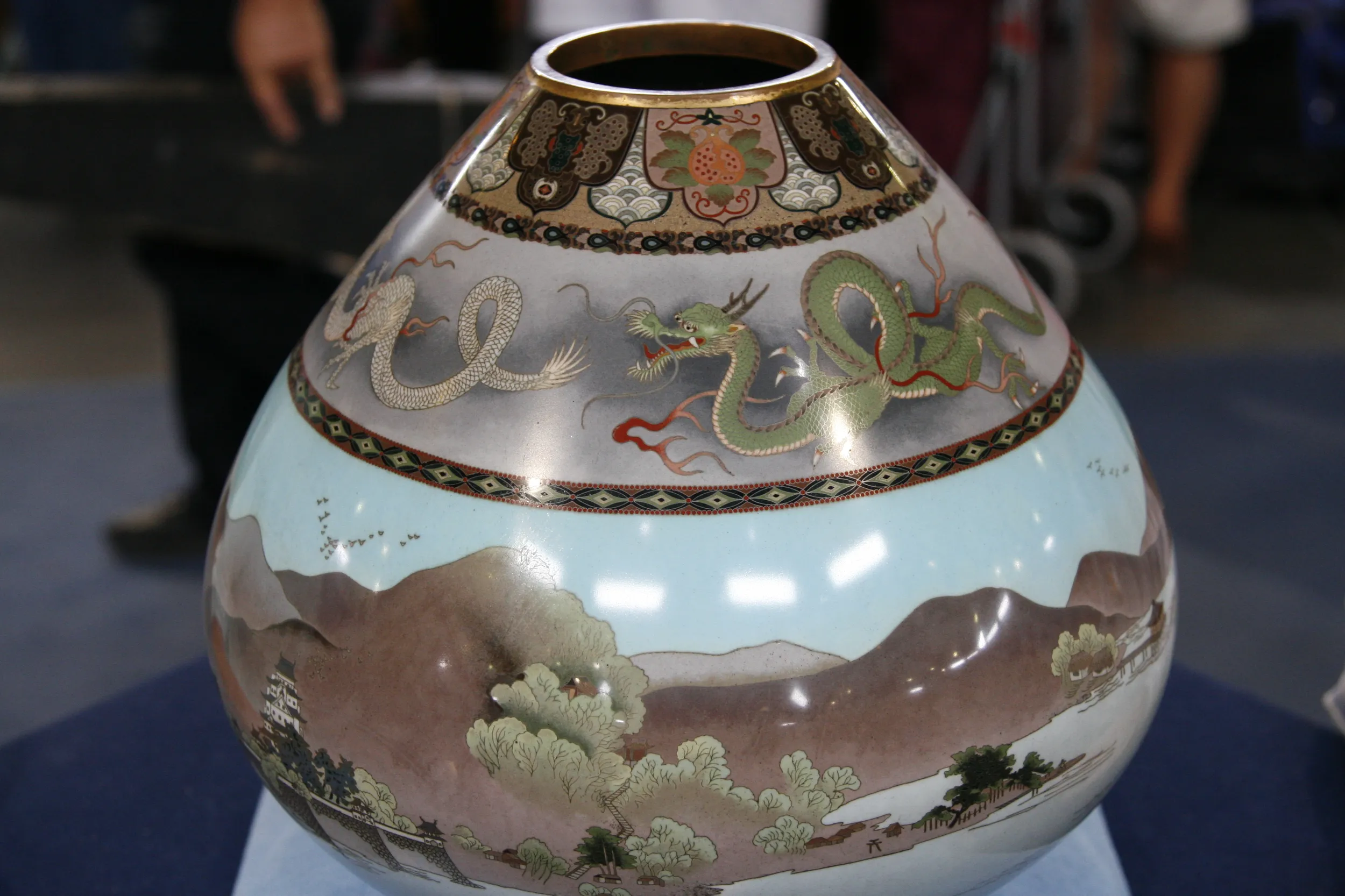GUEST: They've been in our family only since 1972, when my mother got them at an estate sale in Westchester County, New York. Aside from that, I really don't know much about them. She bought them intending to make lamps out of them, which I think might have been a shame.
APPRAISER: Absolutely, good choice not to make that. These were so intriguing when you first brought them in that they actually created a little bit of mystery, and part of the mystery was the ceramic itself. The ceramic here is a very buff colored ceramic, which spoke to me of it possibly being Japanese. And certainly what comes to mind would be Satsuma. Satsuma is a Japanese porcelain that made these wonderfully decorative objects using a lot of gilding, a lot of enamel colors, but with a buff ground porcelain. Some of the decorations that we have here are very japonesque in style. And certainly you have all this different influence. You actually have the influence of cloisonné as well. The quality of the piece as we go around is just wonderful, with all these little vignettes in the aesthetic style as well as on the top, we have this wonderful foo dog or foo lion. So everything here is pointing to them to be Japanese. Included in that, which mystified me even more, I'm going to take this one down so that we can look at the underside. And it's very hard to find, but on the bottom of them, right here, there is a very faint underglaze mark using chop marks. So the Japanese lettering's here. So right away, we have all the decorations for them to be Japanese, we have a ceramic that resembles Satsuma, everything we want about it is Satsuma. Except the character marks, they're gibberish. They don't mean anything. The combination of all of the enamels and the combination of the decoration, the ceramic, the modeling that we have on the covers and all don't speak of being Satsuma. It has the whole package. So where's the mystery? The mystery is that they're French.
GUEST: Huh! How do you determine French?
APPRAISER: The particular period of time that these would have been produced would have been in the 1870s or 1880s, and at that time, in 1878, we had the French Exposition, which was the French World's Fair. Lots of companies were making very special things for that exhibition, and I think these were made for that exhibition. They're just too high-ended, too wonderful not to be part of that. Impossible to know specifically who manufactured them, but just really, really wonderful examples for what they are. And absolutely perfect condition. At auction today, I would suspect, as nice as these are and as eye-catching as these are, for them to realize in the range of $5,000 to $7,000.
GUEST: Apiece?
APPRAISER: As a pair.
GUEST: As a pair. Very nice.

